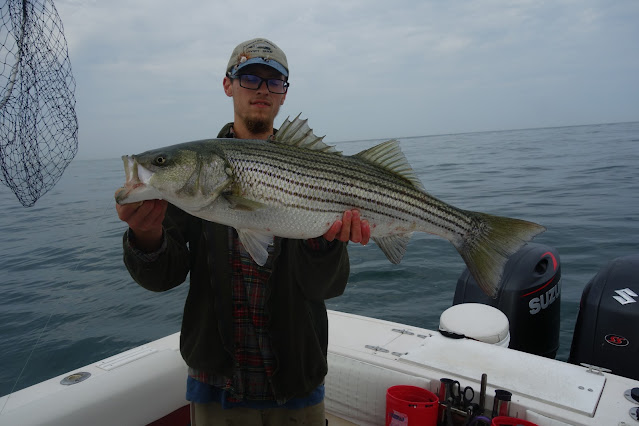I can fish pretty much all winter. I don't always, because sometimes it legitimately hurts to be outside. When merely exposing your skin to air results in significant pain that's probably a bad sign. But generally, I like winter fishing. Aside from the popular holdover striper places, popular ice fishing spots, and the Farmington River I generally find myself along out there on the water in the winter, and I like that a lot. Am I patiently waiting for spring to bring much more aggressive fish and more variety? Absolutely. But my love of spring has to do with so much more than just fish. The return of the migrating birds and others passing through on their way north, the budding then blooming of native plants, the insects... I love it all. But the thing I really wait all winter for with baited breath, watching forecasts intently for any sign of hope, is the re-awakening of herpetofauna: reptiles and amphibians.

It happens before the first day of spring on the calendar most years, at least recently. In fact, 2022 is the first year I've seen a frog in CT on the very first day of the year. But February has been a regular amphibian month for me, and March brings the first snakes. I made a quick stop while bouncing between brown trout streams a few weeks ago on a sunny 60 degree February day and saw the first Eastern ribbon snake of the year, though it slipped into its hole before I could get a photo off. A few rainy nights produced some beautiful wood frogs and the odd spring peeper as February transitioned into March. Visits to some den sites produced signs that some snakes had been out, but no sightings of the animals themselves. Then, on March 7th, I payed a visit to a black racer den. The den is in a steep road grad, composed of a mix of soil rock fill, most of which came from blasted out roadcuts not far away. The slope gets good exposure and has some nice emergent vegetation. Though racers are the predominant species, I've also found Eastern rat snakes and garters as well.
I worked my way down the slope slowly, carefully examining the leaf litter for patterns I've trained my brain to recognize. Snakes aren't always out in the open and easily spotted. They frequently coil under puffed up fallen leaves or grass, letting the sun warm parts of their body while much remaining very cryptic. Even an adult black racer can be very hard to spot at times, and it's imperative that I spot the snake before I'm right next to it if I want to get the best possible photos. This time though it wasn't like that. The one snake that had emerged, a thick adult racer, was right out in the open adjacent to the area they emerge from. It was an impressive animal in perhaps it's least impressive state. His movements were slow and labored, as his body temperature was very likely still extremely cold. He was also completely covered in dust, a common trait of freshly emerged snakes.


It was easy enough for me to see through the dust and grime to the spectacular animal underneath. I've got an affinity for racers. Perhaps it's the difficulty of photographing a big, pristine adult in it's best shape... they don't let you, most of the time. Racers are intense. They look at you, calculating, thinking, trying to judge your next move, and if they don't like it they can place an exceptionally accurate strike. They most painful snakebites I've ever taken have been from racers, and if you don't yield they'll bite over and over. Getting really close to a snake like that, ideally without handling it, is very challenging. It takes time, patience, and a keen awareness of the animal and it's body language. If I can photograph racers without getting tagged, I'm all the more prepared for the interactions with copperheads and timber rattlesnakes that I love so much. A racer beats the paints off either of CT's pit vipers when it comes to speed, erratic behavior, and cunning. They'll f*** you up, if you let um.
With the first photographed snake of 2022 under my belt, I was beginning to feel a lot better about life. I'm not sure anything makes me feel like seeing a good reptile or amphibian does. It's pure joy, a different joy than I get from catching a great fish. Similar, but just not quite the same. I've long felt that the good feeling I get from catching a fish is derived from the biological necessity to obtain nutrients. Though I deprive myself of the actual caloric intake by releasing so many of the fish I catch, I'm still taking advantage of the positive signals catching prey results in. It's not like that with finding a snake, it's something else. Something new, I think. See, every species gets positive reinforcement from obtaining food, but in most cases animals get negative reinforcement from encountering snakes. There was a time when getting bit by a venomous pretty much meant death for us. So we jump, we startle, and some of us remain perpetually terrified- but not everyone. Some people are just innately captivated by these weird creatures. I am certainly one of those folks, forever chasing the joy I get from seeing that patch of scales in the leaf litter.
Thank you to my Patrons; Erin, David, John, Elizabeth, Brandon, Christopher, Shawn, Mike, Sara, Leo, C, Franky, Geof, Luke, Streamer Swinger, Noah, Justin, Sean, and Mark for making Connecticut Fly Angler possible. If you want to support this blog, look for the Patreon link at the top of the right side-bar in web version.











